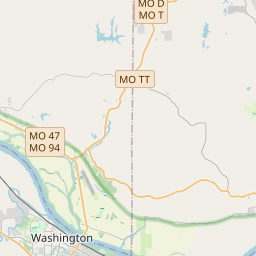The Civil War Comes to Washington
Historical marker location:






April 12, 1861: The Civil War begins with the Confederate attack on Fort Sumter, located in South Carolina's Charleston Harbor.
April 15, 1861: President Abraham Lincoln issues a call for 75,000 volunteers to serve in the Union Army to suppress the rebellion.
May 24, 1861: The first major land battle, known as the First Battle of Bull Run (or First Battle of Manassas), takes place in Virginia. It ends in Confederate victory.
September 17, 1862: The Battle of Antietam in Maryland becomes the bloodiest single-day battle in American history, with heavy casualties on both sides. The Union forces, commanded by General George McClellan, manage to halt Confederate General Robert E. Lee's advance into Union territory.
January 1, 1863: President Lincoln issues the Emancipation Proclamation, declaring that all slaves in Confederate-held territories are to be set free. However, the proclamation does not immediately free all slaves in the United States.
July 1-3, 1863: The Battle of Gettysburg in Pennsylvania takes place, resulting in a significant Union victory and inflicting heavy casualties on Confederate forces. It marks a turning point in the war.
November 19, 1863: President Lincoln delivers the Gettysburg Address, emphasizing the principles of liberty, equality, and the preservation of the Union.
April 9, 1865: General Robert E. Lee surrenders to Union General Ulysses S. Grant at Appomattox Court House in Virginia, effectively ending the Civil War.
April 14, 1865: President Lincoln is assassinated by John Wilkes Booth while attending a play at Ford's Theatre in Washington, D.C.
May 10, 1865: Confederate President Jefferson Davis is captured, signaling the collapse of the Confederate government.
December 6, 1865: The Thirteenth Amendment to the United States Constitution is ratified, officially abolishing slavery throughout the country.
While this timeline provides an overview of key events, it is important to note that the Civil War spanned over four years, from 1861 to 1865, and encompassed numerous battles, campaigns, and political developments that shaped the course of American history.
The famous Dred Scott case, which helped fuel the tensions that led to the Civil War, originated in Missouri. Dred Scott was a slave who sued for his freedom in the Missouri courts in 1857, but the U.S. Supreme Court ultimately ruled against him.
The county was officially created in 1818 and named in honor of Benjamin Franklin, one of America's Founding Fathers. Located along the picturesque banks of the Missouri River, Franklin County quickly became an important transportation hub, with riverboats playing a crucial role in the county's economic development. The arrival of the railroad in the late 19th century further solidified Franklin County's importance as a center of commerce and trade.
Like many areas in Missouri, Franklin County played a significant role in the American Civil War. The Battle of Boeuf River occurred in 1861, a skirmish that resulted in a Union victory and helped solidify control of the region. The county saw its fair share of skirmishes and struggles during the war, leaving a lasting impact on the local community.
In the years following the Civil War, Franklin County experienced rapid growth and development. The county's agricultural economy flourished, with the production of tobacco, livestock, and dairy products playing a pivotal role. The county also saw the emergence of mining as a vital industry, as rich iron deposits were discovered in the region. This led to the establishment of numerous iron and steel foundries, providing employment opportunities and contributing to the county's prosperity.
Today, Franklin County continues to thrive as a vibrant community. It embraces its historic roots, with many preserved buildings and landmarks reflecting its past. While the county has seen modernization and advancements, it remains deeply connected to its agricultural heritage and maintains its welcoming small-town charm.
Franklin County Timeline
This timeline provides a condensed summary of the historical journey of Franklin County, Missouri.
- 1818: Franklin County is established as one of the original five counties in the Missouri Territory.
- 1827: The town of Union is founded as the county seat of Franklin County.
- 1835: Construction of the first railroad, the Pacific Railroad, begins in Franklin County.
- 1850: The population of Franklin County reaches over 11,000.
- 1861-1865: Franklin County residents actively participate in the American Civil War, with some supporting the Union and others supporting the Confederacy.
- 1875: The Washington Manufacturing Company is established, bringing industrialization to Franklin County.
- 1930s: The Great Depression causes economic hardship in Franklin County, with many residents struggling to find work.
- 1950s: Franklin County experiences a period of rapid growth and development, with new infrastructure and industries being established.
- 1982: The Great Flood of '82 devastates Franklin County, causing widespread damage and loss of life.
- 2000s: Franklin County becomes a popular tourist destination, known for its scenic beauty and historical sites.